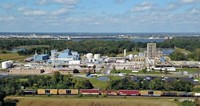Advertisement
Grab your lab coat. Let's get started
Welcome!
Welcome!
Create an account below to get 6 C&EN articles per month, receive newsletters and more - all free.
It seems this is your first time logging in online. Please enter the following information to continue.
As an ACS member you automatically get access to this site. All we need is few more details to create your reading experience.
Not you? Sign in with a different account.
Not you? Sign in with a different account.
ERROR 1
ERROR 1
ERROR 2
ERROR 2
ERROR 2
ERROR 2
ERROR 2
Password and Confirm password must match.
If you have an ACS member number, please enter it here so we can link this account to your membership. (optional)
ERROR 2
ACS values your privacy. By submitting your information, you are gaining access to C&EN and subscribing to our weekly newsletter. We use the information you provide to make your reading experience better, and we will never sell your data to third party members.
Environment
Solvay provides contested PFAS reference standard
The compound, C6O4, was the subject of an international patent dispute
by Craig Bettenhausen
June 16, 2021
| A version of this story appeared in
Volume 99, Issue 23
After months of delay, Solvay is offering researchers an analytical reference standard for C6O4, a fluorinated chemical patented by the firm and used in the manufacture of some per- and polyfluoroalkyl substances (PFAS).

Italian officials found C6O4 in the country’s Po River near factories that make, use, or process the compound. Researchers need the reference standard to identify and quantify the substance in water samples. But in January of this year, Solvay used patent infringement claims to demand that the standard maker Wellington Laboratories stop selling C6O4, effectively halting the research because Wellington was the only commercial source.
At the time, Solvay told C&EN that its concern was the validity of the standard and its potential release to the firm’s competitors.
Now, Solvay has contracted with the analytical standard maker Ultra Scientific Italia to make the C6O4 standard. Solvay tells C&EN that Ultra will provide samples to government regulators; requests from independent researchers will be evaluated on a case-by-case basis. “Requests by scientists may be made directly to Ultra Scientific Italia, who is the only supplier authorized by Solvay to provide reference standards for C6O4,” a Solvay spokesperson says.
Sara Valsecchi, a researcher at the Italian National Research Council who has been studying C6O4 contamination in the Po, says the 100 mg she received is adequate for environmental monitoring but not enough to carry out studies on the effects and lifetime of C6O4 in the environment. The companies said they will supply the standard a maximum of once per year, she says.





Join the conversation
Contact the reporter
Submit a Letter to the Editor for publication
Engage with us on Twitter